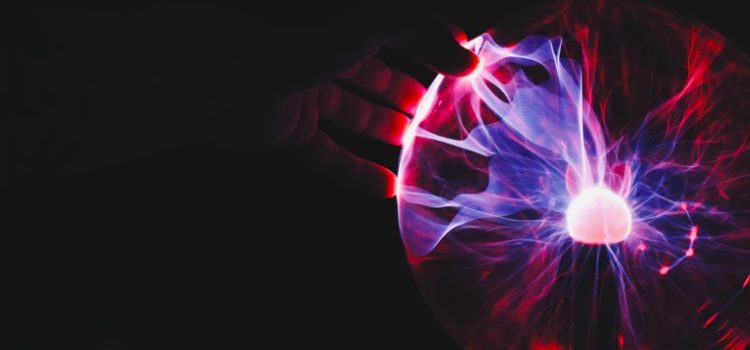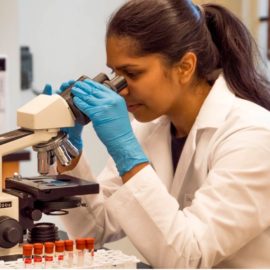
This is a free excerpt from one of Shortform’s Articles. We give you all the important information you need to know about current events and more.
Don't miss out on the whole story. Sign up for a free trial here .
What is nuclear fusion and how does it produce energy? How close are we to fusion power?
Scientists at the National Ignition Facility (NIF) recently achieved net positive energy from a fusion reaction. Scientists hope that fusion will be the foundation of cheap, clean, and sustainable energy for the future.
Read on to find out how close we are to fusion power, according to NIF scientists.
“Limitless” Fusion Power—How Close Are We?
Scientists at the National Ignition Facility (NIF), found at Lawrence Livermore National Laboratory, recently achieved a major milestone in nuclear fusion research: a controlled fusion reaction that produced net positive energy. This is the first time that a fusion reaction has produced more energy than went into it. In theory, fusion could provide clean, safe, and plentiful energy. So, how close are we to fusion power? According to scientists’ predictions, it will be a long time—perhaps decades—before fusion is a viable power source.
Controlled fusion has long been a dream of nuclear scientists and particle physicists, many of whom believe that it’s the energy source of the future: cheap, clean, and powerful. As uncontrolled nuclear fusion is also the process that gives hydrogen bombs their incredible destructive power, achieving fusion in a laboratory setting also has major implications for nuclear weapons testing, development, and maintenance.
In this article, we’ll briefly explain what nuclear fusion is and how it works. Then we’ll explore the implications this new breakthrough has for both energy production and nuclear weapons maintenance. Finally, we’ll discuss the challenges of relying on fusion power as a viable energy source and why it may take decades before we’re close to using fusion power in society.
Background: What Is Nuclear Fusion?
To understand the importance of this breakthrough, we’ll begin by explaining exactly what nuclear fusion is.
Under extreme heat and pressure, two atoms can fuse into a single, larger atom (typically two hydrogen atoms combining into a helium atom). The resulting atom is lighter than the combined weight of the original atoms, and that excess mass gets converted into energy per Einstein’s famous equation e=mc2: energy equals mass times the speed of light squared. In simpler terms, a tiny amount of mass becomes a relatively enormous amount of energy.
Implications for Energy Production
Most of the excitement around this story has to do with fusion’s potential as an energy source, leaving many wondering how close we are to using fusion power in society.
Because fusion uses hydrogen, the universe’s most abundant element, it produces large amounts of energy with minimal risk. Fusion doesn’t produce the hazardous waste left behind by nuclear fission, nor the harmful emissions of fossil fuels. Furthermore, scientists say that fusion reactors carry no risk of meltdown—fusion requires very specific and stable conditions, and if something goes wrong then the reaction simply stops. Therefore, there’s no risk of a fusion reactor suddenly melting down, any more than there is of our sun suddenly exploding.
However, we’re still not very close to using fusion power as an affordable and sustainable energy source, but experts say that the NIF team’s accomplishment is a major step toward that goal.
Implications for Nuclear Weapons
While celebrating the potential for safe and clean energy, many of these stories gloss over the other major use of nuclear fusion: a tool for nuclear weapons testing and maintenance.
Because nuclear fusion is the same reaction that takes place inside of a hydrogen bomb, a controlled fusion reaction in a lab can provide invaluable information about how a nuclear weapon would work under various conditions, using different materials, and so on. In other words, scientists can test nuclear weapons without having to actually make or detonate them.
Future Challenges
Unfortunately, while the NIF team’s achievement is impressive and exciting, there are still enormous technological and financial hurdles to clear before fusion becomes a viable power source. Below, we’ll discuss how close we are to using fusion power as an energy source, and why it actually may take decades to open the first fusion power plant.
First of all, the laser at NIF is outdated and inefficient. While it’s true that the fusion reaction generated more energy than went into it, producing that initial laser burst required draining many times as much energy from the grid. More efficient lasers do exist, but even so, scientists will need to produce much higher yields for fusion to be a practical energy source. Secondly, that laser averages about 10 shots per week. Experts say that a fusion power plant would need a laser that can fire as often as 10 times per second.
Then there’s the question of resources. While the fusion reaction itself uses cheap and plentiful hydrogen, that hydrogen has to be inside of a diamond shell, which is itself placed into a gold canister. Needless to say, getting enough diamond and gold to run fusion power plants is another significant hurdle.
When asked how close we are to fusion power, the director of Lawrence Livermore (where the NIF is located) predicted that the first fusion plant could come online in somewhere between 30 and 50 years.

Want to fast-track your learning? With Shortform, you’ll gain insights you won't find anywhere else .
Here's what you’ll get when you sign up for Shortform :
- Complicated ideas explained in simple and concise ways
- Smart analysis that connects what you’re reading to other key concepts
- Writing with zero fluff because we know how important your time is






